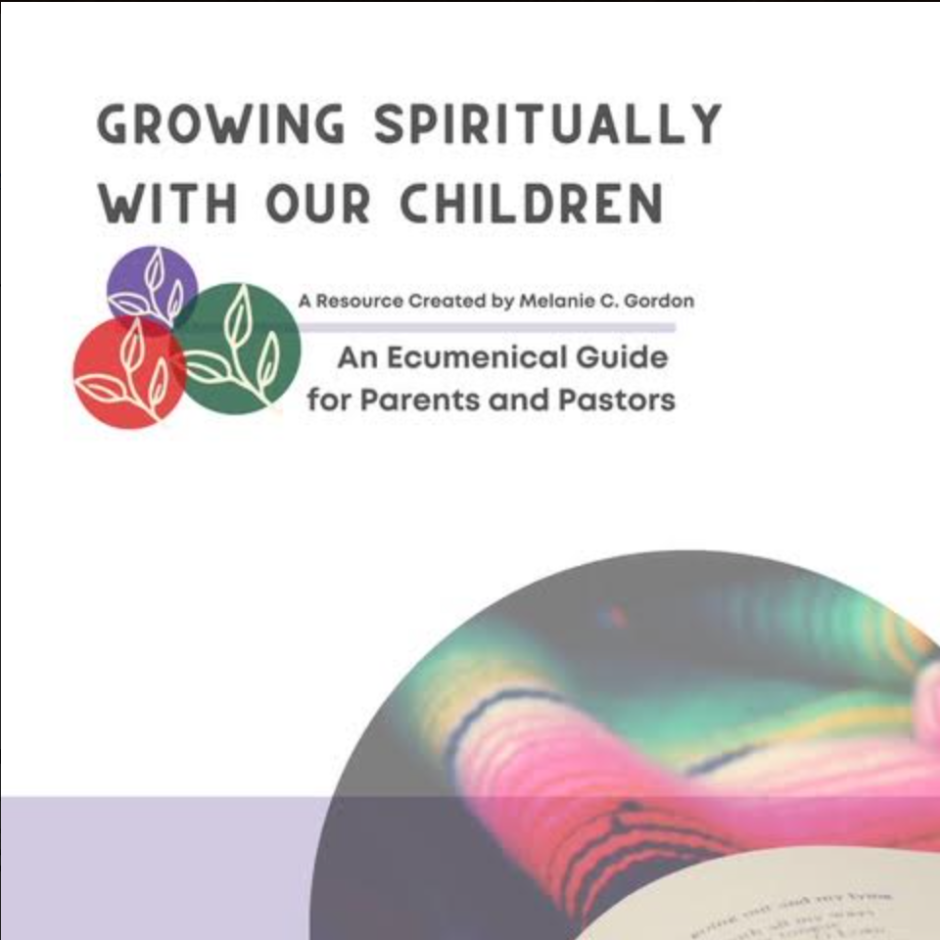This resource bridges two giant roles in my life; parenting my crew of seven and serving in the field of children’s and family ministries. It’s too hard to choose which perspective to use for this review, so I’m deviating from my usual form and offering you two opening paragraphs, as well as two closing paragraphs. Read this as it applies to your life.
Opening Paragraph, Option 1:
It’s almost twenty years since my oldest child was born. I remember holding this wee little bundle that was hours old, wondering what on earth made me qualified to be her mother. She and I, alongside my husband, found our way through those first few months, getting to know each other and discovering what mattered to each of us. (Thankfully, she has grown to appreciate sleep much more than she did.) We brought this little peanut everywhere, including church, and enjoyed watching her experience her world. We figured out how to introduce table food, how to help her settle in for naps and bedtime, what books were her favorites, and what activities made her squeal with joy (reading, spinning, dancing, and anything that got her soaked in water- and none of that has changed). However, I craved a guide to help me figure out all this newness. I read everything I could get my hands on and books, blogs, friends, and real life, equipped us to get most of the basics figured out well enough that we went on to bring home six siblings for that first kid. Trying to get a handle on how to be the best teacher for my children’s spiritual development was another story. Sure, there are guides, but there’s a lot of dross to sift through written by people who either never even had children or were very emphatic about not sparing the rod. Nothing connected with what my husband and I were looking for; a practical guide of stories and traditions to meld into our everyday lives. And I had been working in the field of children’s and family ministries for several years at that point! I was not starting from scratch! I would have given my eye teeth for Growing Spiritually With Our Children; An Ecumenical Guide for Parents and Pastors by Melanie C. Gordon.
Opening Paragraph, Option 2:
It’s been over two decades since I started working in children’s and family ministries. I have served in a multitude of congregations, across many denominations, representative of various sizes and settings. Times have changed, social media is everywhere, smartphones are ubiquitous, family commitments have evolved, and a pandemic laid bare what was of value to people. For the most part, I have been surrounded by people who are truly dedicated to supporting children and families and want to have the best information at their fingertips so they can properly support those in their care. But trying to find an ecumenical resource that encompasses what to DO with the children and their families, what to USE in the church and at home, and what to EXPECT at which developmental level is akin to finding the rainbow unicorn that brings you bottomless cups of coffee served at the perfect temperature. Impossible. So imagine my glee when Growing Spiritually With Our Children; An Ecumenical Guide for Parents and Pastors by Melanie C. Gordon arrived from the author for me to preview.
Growing Spiritually With Our Children is written for both parents and practitioners (pastors, children’s ministers, and children’s and family ministry leaders). It opens with a conversation on why this was written and how to use the guide. The ‘meat and potatoes’ that follows is a comprehensive guide of what the spiritual development of a typically developing child looks like; broken down by ages. Each age level discusses the child’s spiritual development at home, at church, their understanding of God, how they engage in worship, how they interact with Scripture, what are their needs from the community. They are coupled with practical ways that parents and practitioners can support the child’s growth. The author lays it out simply, in accessible language, and in easy-to-use chunks for adults to use immediately. It is followed by a thorough listing of Bible stories for children to know throughout their development, broken down by ages. If you are working with a child that doesn’t fit a typical age development progression, it is easy to find the stories, activities, and supports needed by referencing what they are doing from the spiritual development section. The digital download can be printed out into a booklet, but also translates well to an e-reader. A list of language specific to spiritual development is included to help adults know terms that we may take for granted and want to pass on to the children in our lives. (I really appreciate how the author made sure to say that it’s not meant to be a vocabulary lesson for quizzing!) The language is not denomination specific, which makes it easy to use in a variety of congregations and bridges that space that could divide, making sure that we are uniting as God’s big family.
Closing Paragraph, #1:
While my four oldest children are now teens that have been confirmed into our congregation, I still have a crew of three kids between the ages of ten and two. You can imagine that, after twenty years, I have read a tremendous amount of nightly Bible stories, attended more church services with wiggly people than most people have even dreamed of, and have prayed with and for young ones daily. One might even say that I may even entered the realm of ‘professional parent’. I still need this guide. There are terms in the language section that I have missed. Because we moved states halfway through our parenting career, half of our kids grew up in a very different worship style than our younger ones. For example, my husband and I have forgotten that our younger ones don’t know about the sung liturgy to accompany communion. I never got around to posting the dry erase prayer board we used to hang on the fridge for the kids to add to each day. The symbols we used to trot out every Advent as part of a Jesse Tree tradition never got unpacked when we moved 8 years ago. I need this resource to remind me of the practices that have fallen through the cracks! But if new-parent me had this resource, you could bet your morning coffee that I would have pulled that resource out almost every day while stories were happening or when the watercolor paints came out. Imagine the power of giving this resource as a new parent gift, along with a little kit of a great children’s Bible, some baby wipes, and a few stickers to place on tissue boxes or diaper bags with easy prayers for parents to pray over their child. This resource would also be a dynamic spine to a parenting class. You could easily design a 6-8 week session using this resource and providing parents with solid practices they can do with their children. You could also consider using it as the spine of a multigenerational Bible Story class. Grandparents, parents, and children all together experiencing the stories lined out here, paired with an associated spiritual practice- so powerful! This resource has so many possibilities for use in supporting parents and caregivers, as well as the children!
Closing Paragraph #2:
This resource has a variety of uses in your ministry. Perhaps you are leading a new crew of children’s ministries leaders. This resource will be invaluable to them as they begin in this sacred calling! It’s easy to understand and apply to in-person, hybrid, and digital settings. The spiritual development section gives solid suggestions on what milestones the children will be meeting, equipping the leaders to craft ministry offerings to support their development and complement what the parents/caregivers are doing at home. It also provides practitioners with benchmarks for measuring quality curriculum. This resource is also valuable for the entire staff of a congregation as they go forth in visioning and planning for ministries to be accessible to all. Making sure you are well versed in what children are experiencing and what you can do to support their development crosses the entire ministry of a church; it’s not just for those who are in children’s and family ministries. I dream of seminaries making this a required resource for their students. I also dream that every church has someone that is able to help the congregation use this resource as they remember those with special needs as they plan their ministries. These groupings still apply- perhaps not for the chronological age, but for spiritual development. The spectrum of development does not change; we just may need some extra time in one before we move on. The flexibility and thoroughness of this resource is not to be missed.





0 Comments